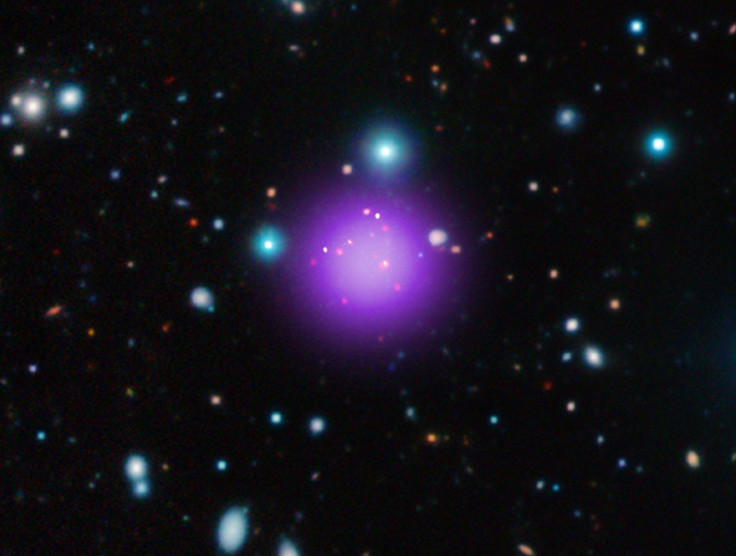Record-breaking galaxy cluster discovered 11 billion light years from Earth
The cluster is the most distant ever to be detected and formed two-and-a-half billion years after the Big Bang.

A new record-breaking galaxy cluster has been discovered 11.1 billion light years away from Earth, making it the most distant ever to be identified.
The galaxy cluster – the largest structures in the Universe, comprising multiple galaxies held together by gravity – is named CL J1001+0220 (or CL J1001 for short) and was spotted using Nasa's Chandra X-ray Observatory and other telescopes. Interestingly, the cluster was captured soon after its birth, a brief but important stage in cluster evolution that has never been observed before.
Because it is so distant, scientists observed the cluster as it was 11.1 billion years ago – the time it takes for its light to reach Earth – meaning it formed just over two-and-a-half billion years after the Big Bang, making it the youngest cluster – at the time of observation – found to date. Its discovery, pushes back the formation time of galaxy clusters by around 700 million years.
"This galaxy cluster isn't just remarkable for its distance, it's also going through an amazing growth spurt unlike any we've ever seen," said Tao Wang, leader of the study.
At the core of the cluster are 11 massive galaxies, nine of which are experiencing an impressive boom in new star birth. In this region, it is estimated that the rate is equivalent to 3,000 suns forming every year, a remarkably high value for a galaxy cluster as distant as CL J1001.
"It appears that we have captured this galaxy cluster at a critical stage just as it has shifted from a loose collection of galaxies into a young, but fully formed galaxy cluster," said a co-author of the study, David Elbaz.
Previously, only these loose collections of galaxies – known as protoclusters – had been observed at greater distances than CL J1001.
The results suggest that elliptical galaxies – galaxies that appear elliptical in shape – in galaxy clusters such as CL J1001 may form their stars during shorter and more violent outbursts than elliptical galaxies that are outside clusters. Also, the new finding suggests that much of the star formation in these galaxies happens after the galaxies fall into the cluster, not before.
"We think we're going to learn a lot about the formation of clusters and the galaxies they contain by studying this object," said co-author Alexis Finoguenov of the University of Helsinki in Finland, "and we're going to be searching hard for other examples".
© Copyright IBTimes 2025. All rights reserved.





















